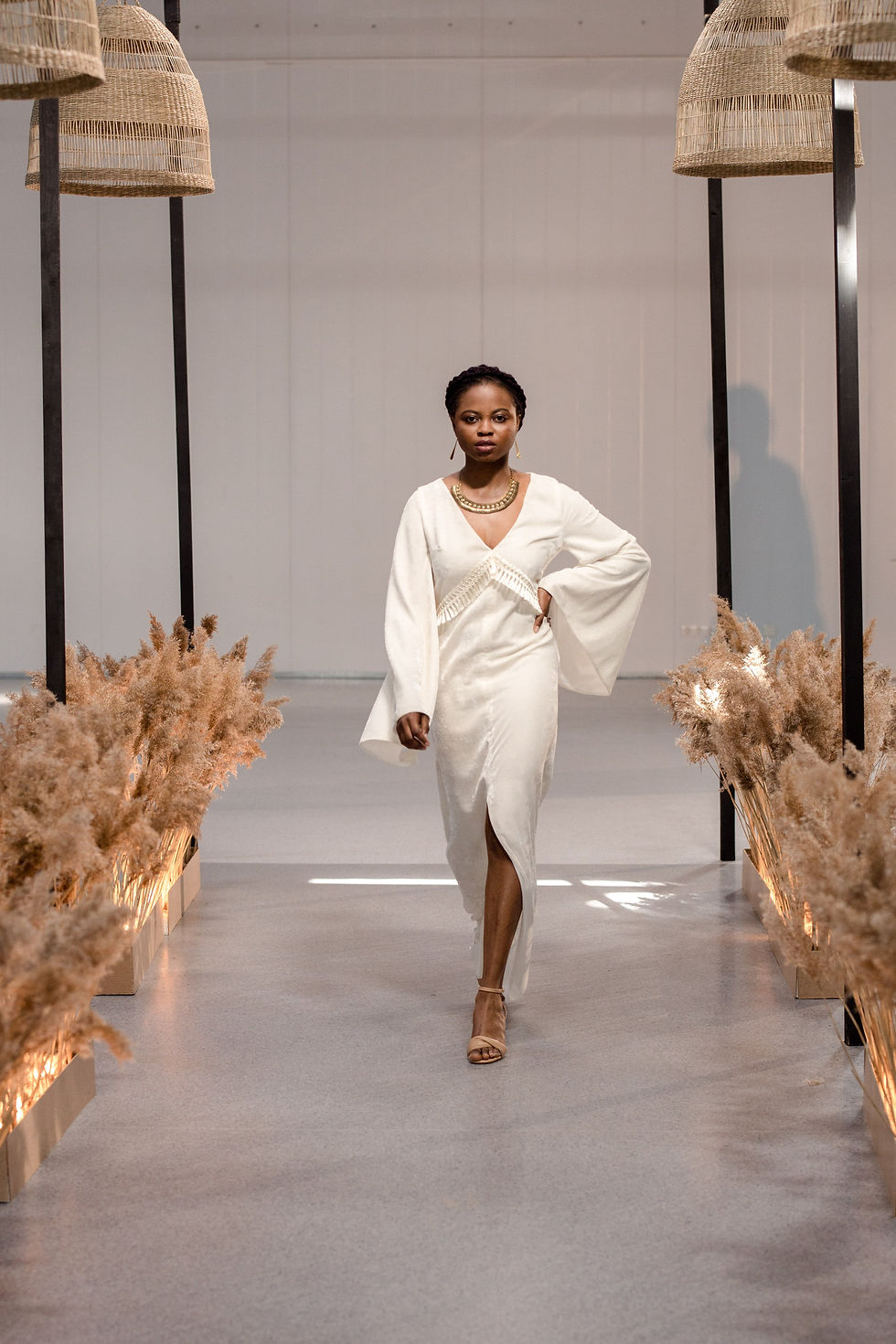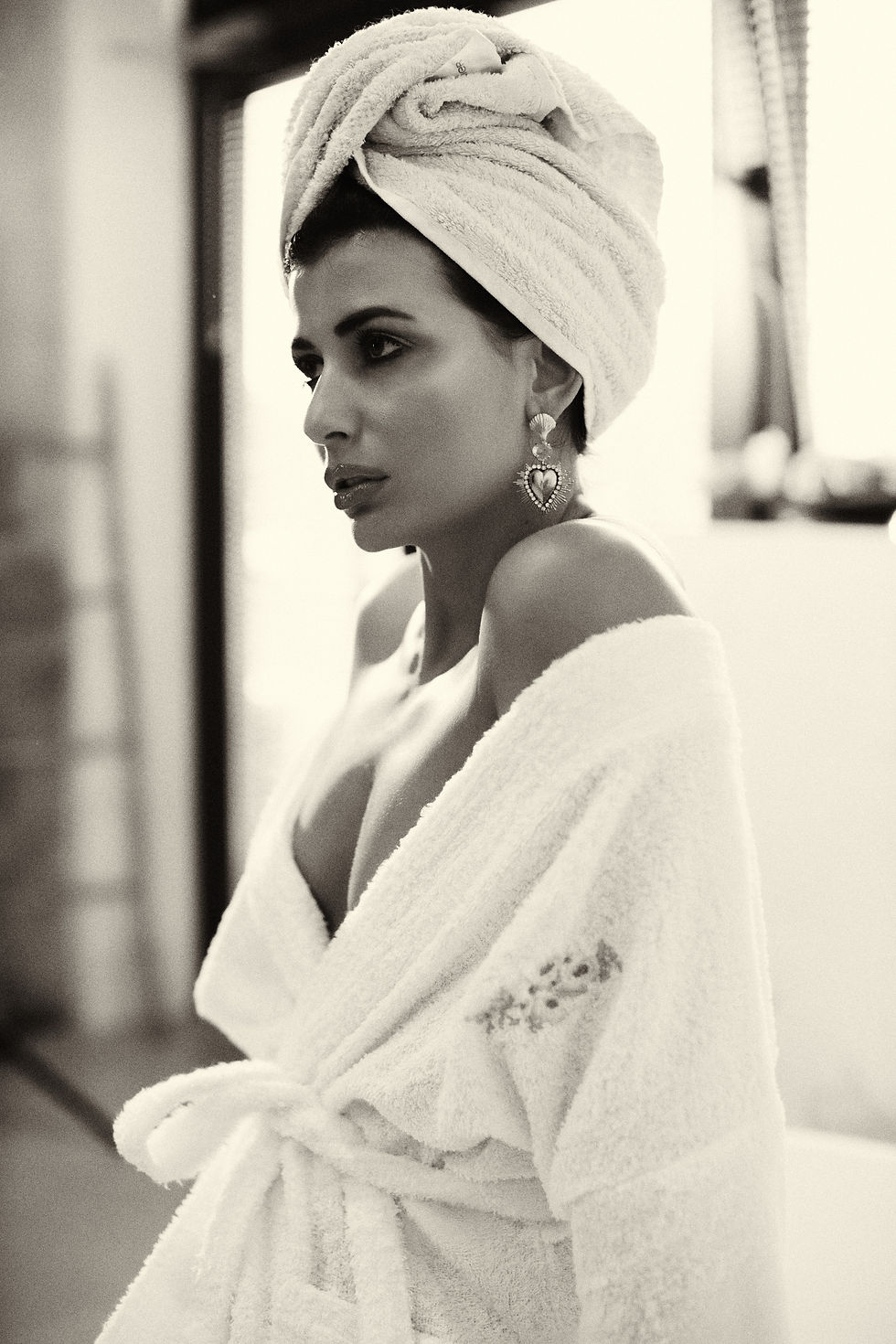Going Pro: Becoming a Model
- Matt
- Jan 6, 2024
- 5 min read

Welcome to part two of my Going Pro Mini series. If you missed part one, Going Pro: Starting a Boudoir Photography Business, you can find it here.
You've taken some photos on your own, with a friend, or with a partner, and you've decided you want to try becoming a model. If you didn’t already know there is a lot more to being a model than showing up and posing for photos. Plus, it's easy to get caught up in the glitz and glamor that you see with professional models. So to give you a leg up I’ve laid out some tips and information to help you along the way. Side Note: This article was mostly written with women in mind but is still useful if you are a man seeking entrance to the world of modelling.
Learn the Trade

Like with any industry, you will want to learn your way around. A good place to start is to familiarize yourself with some of the more common terminology that’s used. Here are some of the terms I know:
Paid Shoot: You show up, you model, and then you get paid. With paid shoots you will probably have very little say in what you are shooting and how it’s shot beyond accepting the job or not.
Test Shoot: A photographer and model get together to shoot a concept, usually done collaboratively and most times without pay.
Time for Photos/Prints (TFP): A type of shoot where a model gets photos as payment.
Casting Call: Open auditions for a modeling gig. You will usually be competing with other models for the gig.
Model Release: A legal document that specifies who owns the photos and what they can do with them.
Model Agency: A company who works to connect models to photographers & other clients.
Comp Card: Your visual calling card/resume as a model.
Freelance Model: A model who isn’t signed with an agency.
Second on the list of things you need to be aware of is the different types of modeling. You have runway models, art models, fashion models, and commercial models just to name a few. Most models focus their efforts on one or more different options to help grow their careers. Lastly, you will need to start learning about taxes, reading and understanding contracts, and potentially operating as a business. Especially if you are going to be freelance.
Work on Your Skills

Can you pose to highlight a certain outfit? Can you project an emotion on que? These are all skills you should know when it comes to being a model. A staple exercise is for models to practice their posing and facial expressions in front of a mirror. Peter Coulson has some excellent videos where he works with new models and helps them learn how to be a better model. I highly suggest giving them a watch.
Build up Your Portfolio

Every model needs a good portfolio to show off their work and, no, your Instagram shouldn’t be your main portfolio. My suggestion is to get a website. Not only does it act as a hub for all of your social media profiles, but it allows you to post photos that you might not otherwise be permitted to on social media. A website also provides more freedom in how you display your images so you get exactly the look you want. You also have the option of setting up your site to sell prints of your work if you so desire provided that you are allowed to do so based on the model release you signed.
Start Networking

Word of mouth can be powerful in the photography industry. Even as an amateur I've talked with other photographers about models they have worked with and what it was like to work with them. I also know for a fact that models talk to each other about the photographers they work with as well. Thankfully social media has made it easier than ever to see who has worked with whom and build up those connections over time.
Be Professional

If you ask photographers what their number one gripe about models is, it’s the unprofessionalism. They don’t reply to their calls/emails/texts, they cancel at the last minute, they're late, or they just don’t show up at all. And that isn’t even getting into being a pain to work with, which is the second issue I hear the most about. On that note, I’m not saying you need to be a doormat and just do whatever it is you are asked/told to do. You will need to be a constant advocate for yourself in this industry, but you can do that and be easy to work with at the same time. It’s all about proper communication. If you want to set yourself up for success, be professional.
Take Care of Your Look

I’m not talking about you needing to be a size zero, thankfully those days are over. You can find models of all sizes working in the industry these days. I’m talking about being consistent with your “look,” the cut and color of your hair is one example. Once you establish the look you are known for it’s usually better to keep it consistent so photographers, agencies, and others know what they are getting when you walk in the door. If you have a body of work where you don’t have a single tattoo and all of a sudden show up with a full arm sleeve, they might not be very happy. Likewise if all of your photos are with long hair and you arrive with a pixie cut without letting them know beforehand some frustrations are bound to occur when your new look no longer fits with the images they are going for.
Set Your Boundaries

If you are going to get into modeling you need to know where your boundaries are. Some models will not do nude photos whatsoever, some are OK with shooting nude but only implied. While others are more than happy to shoot nude, but no open leg shots. It’s up to you to set your boundaries and stick to them. Good photographers will always respect your boundaries. (Side note: boundaries can encompass a lot more than just nudity.) I suggest being conservative with your boundaries to start with and if you feel comfortable with the photographer, then you can bring up that you would be willing to shoot something else since you have gotten to know them over a couple of shoots. Lastly, before you ever agree to a shoot or sign a contract, you need to discuss your boundaries with the photographer if they don’t ask, although most good ones will generally do so.
Be Aware

Unfortunately, there are bad actors and scam artists in the photography industry. While researching for this post I came upon the following article that I think you should read if you are interested in pursuing modeling either full or part time.
In addition to your personal safety and not getting scammed, you should be aware of Guys with Cameras (GWCs). GWCs are photographers who pick up cameras with the sole purpose of seeing/shooting models in various states of undress. While some are relatively harmless and pay well for your time, others aren’t. Some see shoots as their chance to see, flirt with, touch, or even try to sleep with a model.
Final Thoughts
While there is a lot to take in with becoming a model, knowing what you are getting yourself into can be a major help to building a successful career in the industry. Take it slow, learn as you go, and you might just make it. And always remember, that you are your number one advocate.
One last thing. If you are enjoying this blog and wish to support the work I do here, consider using the Buy me a Coffee button at the bottom of the page to make a one time donation to show your appreciation.




Comments